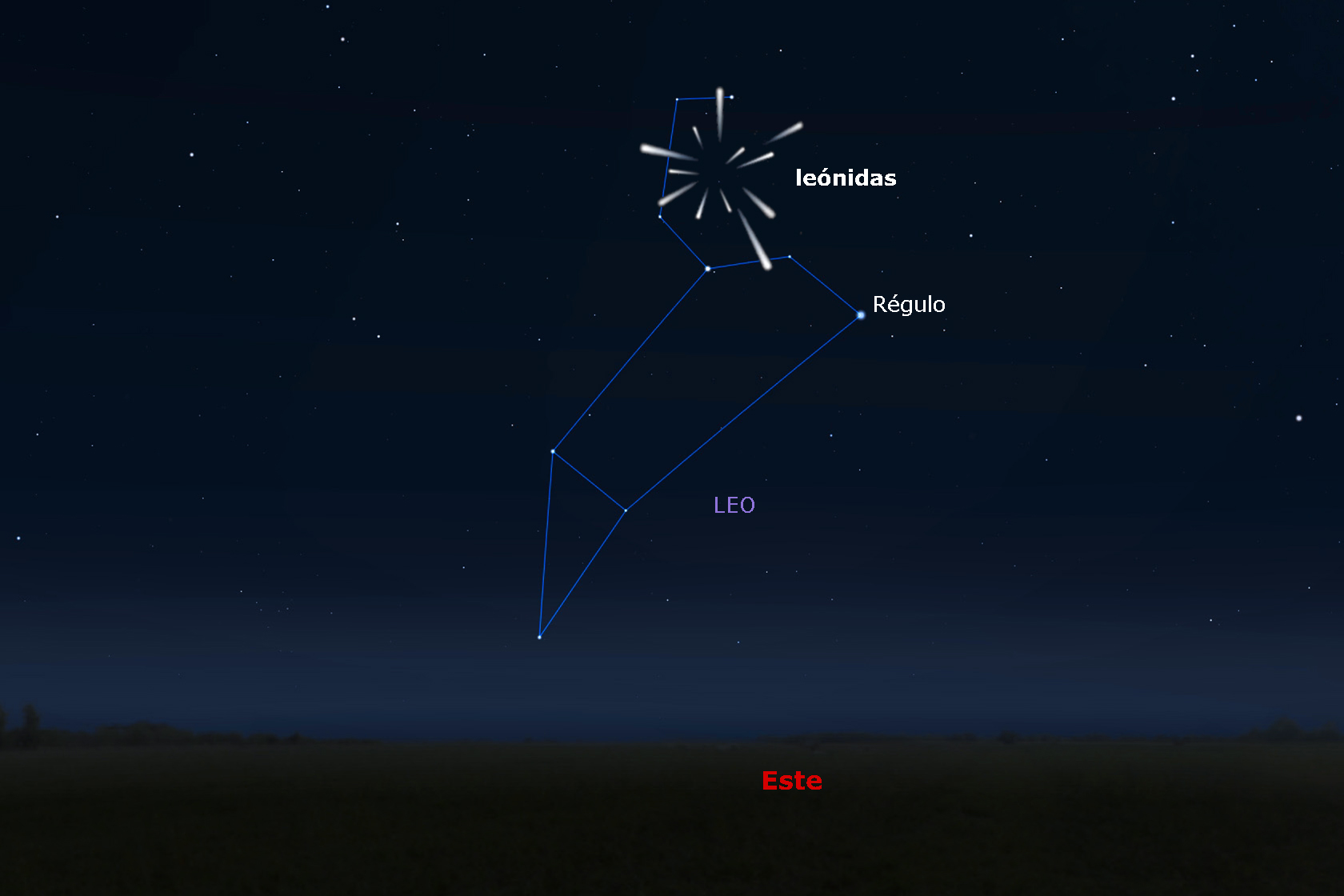Información astronómica

Leónidas
La lluvia de meteoros de las leónidas es visible todos los años entre el 6 y el 30 de noviembre. Su tasa de actividad suele ser modesta, entre 10 y 20 meteoros por hora, pero cada 33 años, coincidiendo con el paso del cometa 55P/Tempel-Tuttle por el perihelio de su órbita, las leónidas dan lugar a espectaculares tormentas de meteoros llegando a una frecuencia de miles de meteoros por hora.
Algunas de estas tormentas estelares alcanzaron proporciones importantes, como la de la noche del 13 de noviembre de 1833 en la costa oeste de Estados Unidos.
Para observadores a nuestras latitudes (40º norte) el radiante de las leónidas se sitúa por encima del horizonte desde la medianoche hasta el amanecer.
¿Qué se espera en 2025?
La máxima actividad en 2025 tendrá lugar el 17 de noviembre hacia las 19 horas de tiempo oficial peninsular, aunque puede haber un picos secundarios más débiles a lo largo de esa noche. La Luna estará en fase menguante con una iluminación muy baja, en torno al 6%, por lo que no molestará para la observación.

El 'radiante' de las leónidas.
¿Por qué suceden?
Los meteoros de las leónidas son fragmentos del cometa 55P/Tempel-Tuttle, que fue descubierto en 1865, y que tiene un periodo orbital de 33,2 años. Como todos los años por estas fechas, la Tierra atraviesa un anillo poblado con los fragmentos desprendidos del cometa 55P/Tempel-Tuttle en anteriores pasos cerca del Sol. Cuando uno de esos fragmentos (o meteoroides) entra en contacto con la atmósfera terrestre, se vaporiza por la fricción con el aire, creando así el resplandor luminoso que conocemos como meteoro o estrella fugaz.
Todos los meteoros de una lluvia parecen tener un único punto de origen. Este punto se denomina "radiante", y su localización se utiliza para nombrar a la lluvia de estrellas. Las leónidas tienen su radiante en la constelación de Leo.
¿Qué hacer para ver las leónidas?
El lugar de observación puede ser cualquiera con tal de que proporcione un cielo oscuro. Es preferible observar desde un lugar que tenga pocos obstáculos para la vista (como edificios, árboles o montañas), y no utilizar instrumentos ópticos que nos limiten el campo de visión. Aunque las leónidas parecen venir de la constelación de Leo (de ahí su nombre), se pueden ver en cualquier parte del cielo. Conviene dirigir la mirada hacia las zonas más oscuras, en la dirección opuesta a la posición de la Luna si la observación se realiza cuando esta esté presente. Lo más cómodo es tumbarse y esperar a que la vista se acostumbre a la oscuridad.
